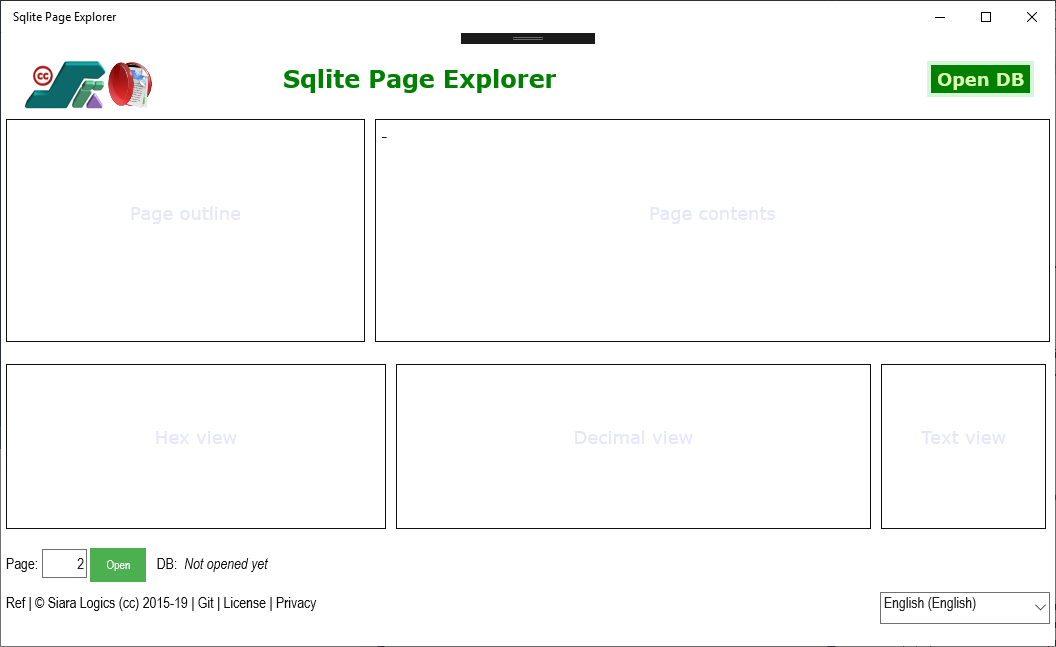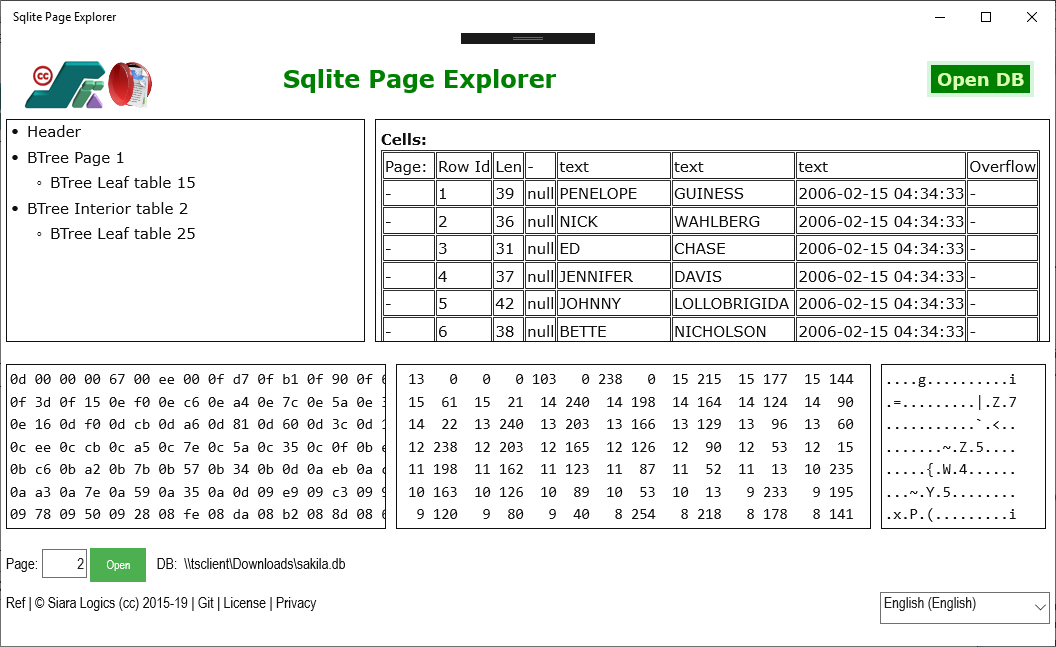
Sqlite Page Explorer


App details
About Sqlite Page Explorer
Open Sqlite databases and explore the internal organisation of various objects such as schema, tables and indices. To understand how Sqlite3 data is organised, please see Database file format from Sqlite website.
Applications:
- Viewing internal organisation of Sqlite databases for software development and troubleshooting
- Studying the format of Sqlite databases for academic purposes
- Forensic investigators may use it to view data from deleted pages
Features
- Opening Sqlite databases, displaying first page (containing header and schema root)
- Opening internal pages which may be a B-Tree page, Freelist page or Overflow page
- Exploring root, internal and leaf pages of B-Tree pages hierarchically.
- Parsing and displaying cell content for B-Tree pages
- Exploring Freelist (deleted) trunk and leaf pages
Usage
Download any sqlite database, and Open it with this application (Import to Sqlite Page Explorer).
Alternatively, on clicking the Open database button, the user can select the database file to explore. A sample database (chinook.db) has been provided. It can be selected from application specific subfolder under the Downloads folder of your device.
The application opens the header, finds out the page size and provides links for the user to expand the Header and Page 1.
The first page invariably contains the header and the schema (definitions of tables and indices). If the schema fits into the first page, the definitions can be seen on the Page details section in the form of table under Cells heading.
For exploring data of tables and indices, the Open button against each table/index under Cells section may be clicked. This opens the root page of the table or index. Further exploration can be carried out from there by clicking on buttons in the Page details sections.
If the schema spills over more than one page, the first page contains links to the different pages in which schema information is stored. These links can be seen in the Page details section under Cells heading and Open button against Right most pointer just above Cells.
For each page, the page content in bytes is shown in Hex, Decimal and Text representations. It is also possible to open a random page from the database by entering page number and clicking on the Open: button at the bottom.
About Sqlite (from their website)
SQLite is a self-contained, high-reliability, embedded, full-featured, public-domain, SQL database engine. SQLite is the most used database engine in the world.
SQLite is an embedded SQL database engine. Unlike most other SQL databases, SQLite does not have a separate server process. SQLite reads and writes directly to ordinary disk files. A complete SQL database with multiple tables, indices, triggers, and views, is contained in a single disk file. The database file format is cross-platform - you can freely copy a database between 32-bit and 64-bit systems or between big-endian and little-endian architectures. These features make SQLite a popular choice as an Application File Format. SQLite database files are a recommended storage format by the US Library of Congress.
Key features
-
Viewing internal organisation of Sqlite databases for software development and troubleshooting
-
Studying the format of Sqlite databases for academic purposes
-
Forensic investigators may use it to view data from deleted pages